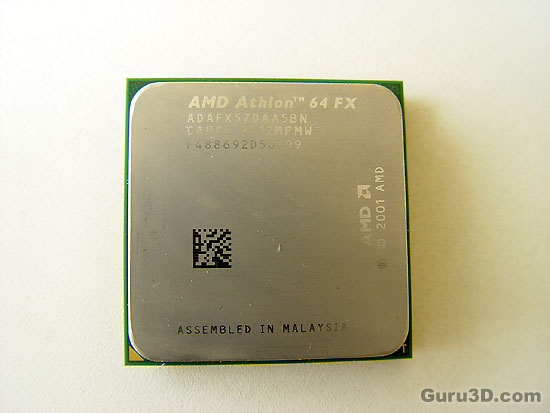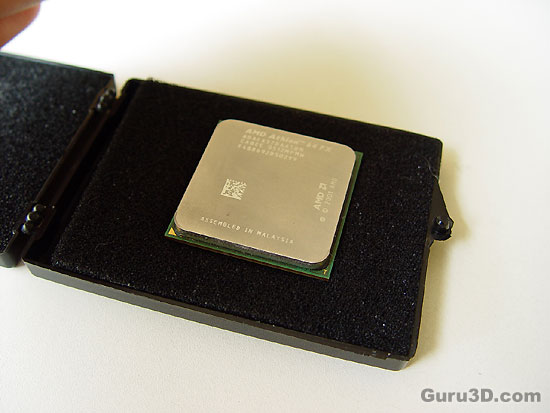Page 2
 For the last couple of months, all we've heard about is dual-core processors. Intel is hectically pushing the Pentium-D and Pentium-XE processors as their top of the line desktop solutions, whereas AMD's Athlon 64 X2 and Opteron dual core processor line ups are dictating the gaming and server market.
For the last couple of months, all we've heard about is dual-core processors. Intel is hectically pushing the Pentium-D and Pentium-XE processors as their top of the line desktop solutions, whereas AMD's Athlon 64 X2 and Opteron dual core processor line ups are dictating the gaming and server market.
Single core processors have irrefutably lost a good deal of their magnetism due to development, as the level of enhanced multi-threaded application performance of dual core processors are winning over users worldwide. People are finally getting a taste of what all server administrators have known for a long time, two is better than one, at least when it comes to processors. So in the midst of all that dual core progress we see a new single-core processor released, the FX-57.
Why release new sinlge core processors you might ask ? Well, why not would be my answer. If you ask me that question directly I will always answer, one fast single core CPU is better then two slower ones. In many ways single core CPUs dominate the dual-core solutions as they need to get faster and more broadly supported by applications. At this moment in time games for example are better off with a single core solution (right now) and since you are on this site... you are probably a gamer.
So with that in mind let's talk business. Right then, the FX-57 as stated is today's fastest single-core processor for the consumer market. There are quite a few FX processors in AMD's FX series ever since it was launched a while ago. The first FX processor was the FX-51 with a Socket 940 design similar to the Opteron series. Let's look at the history of the FX releases:
| CPU | Internal Clock | L1 Cache | L2 Cache | Socket | Hyper Transport | DDR Dual Channel |
| Athlon 64 FX-51 | 2.2 GHz | 128 KB | 1 MB | 940 | 800 MHz | Yes, Registered |
| Athlon 64 FX-53 | 2.4 GHz | 128 KB | 1 MB | 940 | 800 MHz | Yes, Registered |
| Athlon 64 FX-53 | 2.4 GHz | 128 KB | 1 MB | 939 | 1 GHz | Yes |
| Athlon 64 FX-55 | 2.6 GHz | 128 KB | 1 MB | 939 | 1 GHz | Yes |
| Athlon 64 FX-57 | 2.8 GHz | 128 KB | 1 MB | 939 | 1 GHz | Yes |
As you can see it looks that only the clock frequency of the new FX was increased a little, not entirely true. The new FX-57 is based on a 90nm fabrication process, which as it seems AMD is extremely successful with. For the more regular Athlon 64 series AMD recently introduced the Venice based core that is based on the same 90nm process. Also the dual-core Toledo X2 series uses it. The somewhat aging 130 nm process (FX-55) is slowly phasing out. I doubt that AMD is still manufacturing them.

So then 90nm, 1 MB of L2 cache and SOI (Silicon-on-Insulator) is what makes the San Diego core that the FX-57 is (code)named after. And now for the useless facts: the processors is fabricated at Fab 30, which is only a couple of hundred kilometers away from here, yes it is made in Dresden, Germany. Throw in SSE3 to the mix of x86 ISA enhancements that AMD's flagship single-core CPU supports and you have one of the fastest processors to date.
Temperature & Tweaking
Before we startup a series of tests and benchmarks we always tell a little about CPU temperature, and believe it or not, this might differ per system. Heatsinks, ambient heat, voltage levels of the mainboard there are some many factors influencing your CPU temperature. Just like its little sister, the 4000+, this processor ran with the standard supplied (boxed) cooling well within acceptable limits. In idle you can expect a 35 Degrees C temperature and when stressed (Sandra Burn-In test) it peaked at merely 56 Degrees C. Tweaking and overclocking then. I already stated that the multiplier is unlocked, which has some advantages. It amazed me to see that the CPU has a little headroom. AMD CPU's are hard to overclock normally.
With air-cooling and a little fiddling around getting to first base, we instantly hit ~3 GHz. With Air cooling 3.1 GHz could be achieved yet was not 100% stable. So basically what we did was increasing the core Voltage to 1.45V, a multiplier of 15 and HTT set at 200. Mind you that you'll need a mainboard that can actually handle some decent overclocking, very important. But when successful, hey you have it running at FX-59 speeds ;)
Right then, let's insert the processor, fire up that little test-rig of ours and benchmark the bejesus out of it shall we?


